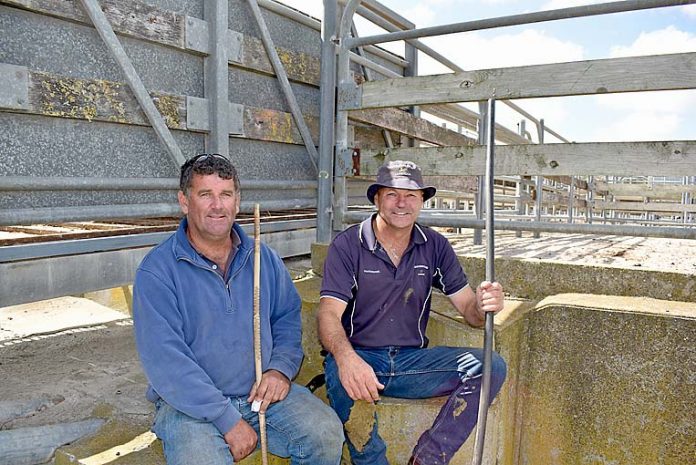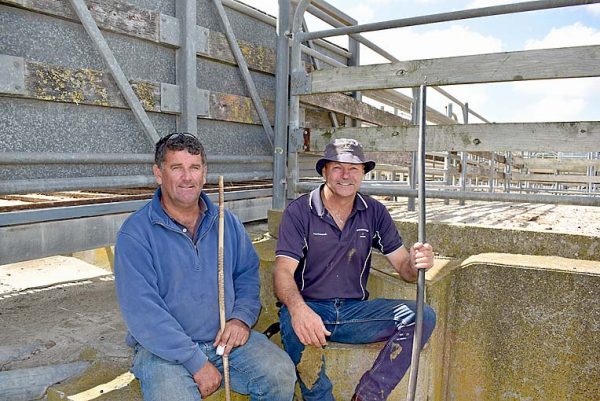

SKYROCKETING cattle prices and surging throughput have underscored a massive increase in revenue at the Millicent Saleyards, with the fortnightly market grossing close to $1.3m.
A year ago, the fortnightly sales had been grossing just $330,000.
Furthermore, no government-ordered environmental measures are required at this time while the community-owned facility has just passed its two-yearly audit with flying colours.
The upbeat signals have been welcomed by agents, graziers and Wattle Range Council and stand in contrast to the situation a year ago when the council-owned facility was slated for closure unless its finances improved.
In the opening sales of 2019, 306 cattle were yarded at a sale and the average price per head had dipped to as low as $2.16 per kilogram.
This year, there were 906 head change hands at one sale while the highest average price paid at a Millicent sale has been nudging $3 per kilogram.
Millicent stock agent John Chay said he was in no doubt the stronger prices at Millicent were part of a rising trend across the board.
Mr Chay attributed the increase to rains in Queensland and New South Wales.
“These better prices are prompting farmers to sell their cattle at Millicent,” Mr Chay said.
“There is renewed interest in selling their cattle here rather than over-the-hooks and direct to the abattoirs.
“One farmer told me that he had not sold cattle here at Millicent for 36 years.”
However, Mr Chay doubted whether stand alone store cattle sales are warranted at Millicent.
The concept had been floated a year ago at a crisis meeting called by council to discuss the future of the saleyards.
“We already have store cattle at every market we run in Millicent,” Mr Chay said.
Mr Chay remained upbeat about the facility and the industry in general, adding there had been no impact on the cattle market of the coronavirus as of yet.
Having worked as an agent in the Millicent area for over 20 years, Mr Chay said the cattle market remained volatile.
Millicent grazier Steve Telfer urged the farming community to continue to support the saleyards as it makes “dollars and sense” to do so.
“We have never sold anywhere else,” Mr Telfer said.
“It started with my late grandfather Eric Telfer.
“Our selling has continued with my dad Noel, myself and now my sons Sam, Jed and Max.
“I have never heard a bad word said about the Millicent saleyards.
“Manager Andrew Robinson runs a smooth operation and everything is up-to-date”.
Council development services director Steve Chapple said no additional compliance measures for plant at the saleyards had been requested by the Environment Protection Authority.
While unwilling to state a sum, Mr Chapple hinted council may have been facing a significant capital outlay.
Mr Chapple welcomed the tick of approval which had recently come from the National Saleyards Quality Assurance Unit.
He said this was also welcome news along with the stronger numbers and prices.
“The saleyards reference group will be looking at the possibility of running store sales at our next meeting,” Mr Chapple said.
“The group has council representatives along with agents, farmers and contractors”.
Speaking at a recent council meeting, Councillor Moira Neagle said she was pleased to see cattle from Mount Gambier being brought to sell at Millicent.
Ms Neagle is herself a primary producer at Millicent and said she had been told of the origins of the cattle by a Millicent agent.







